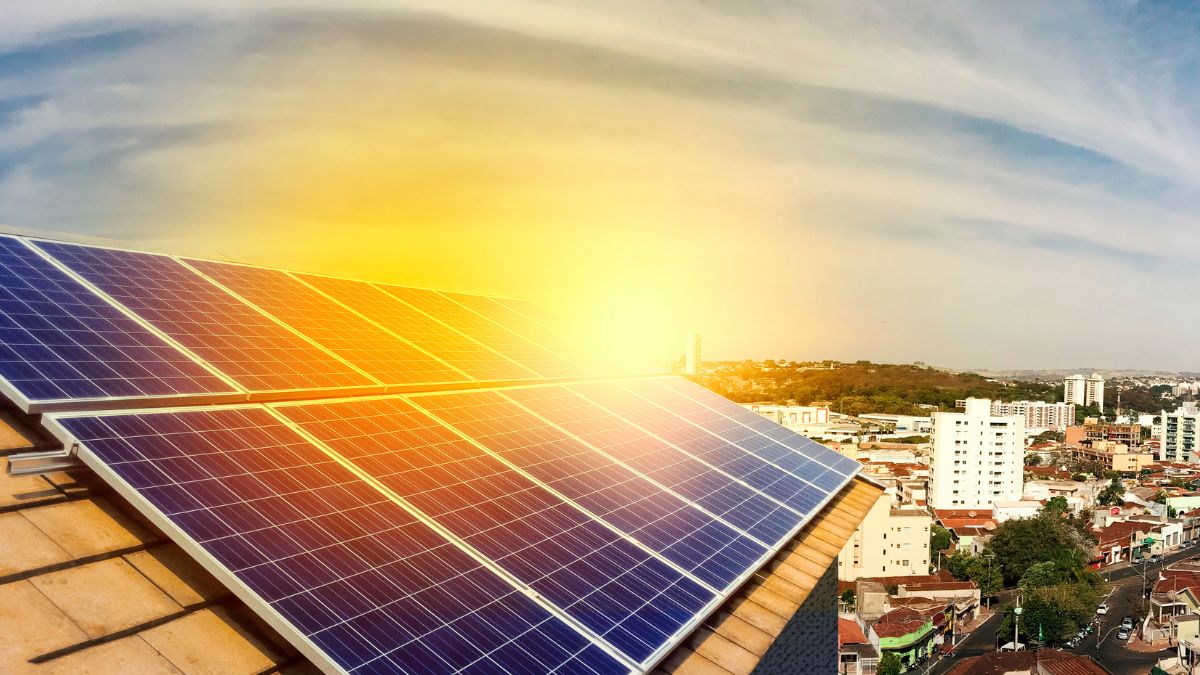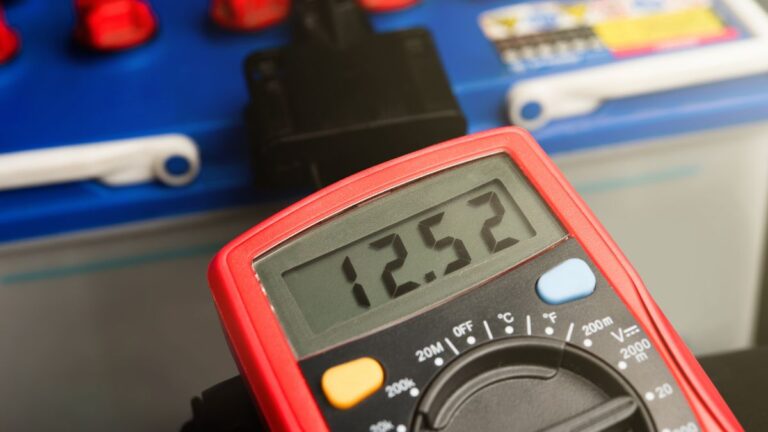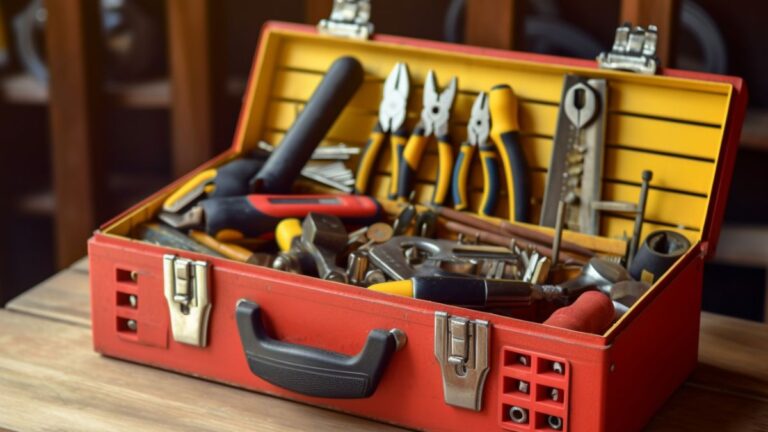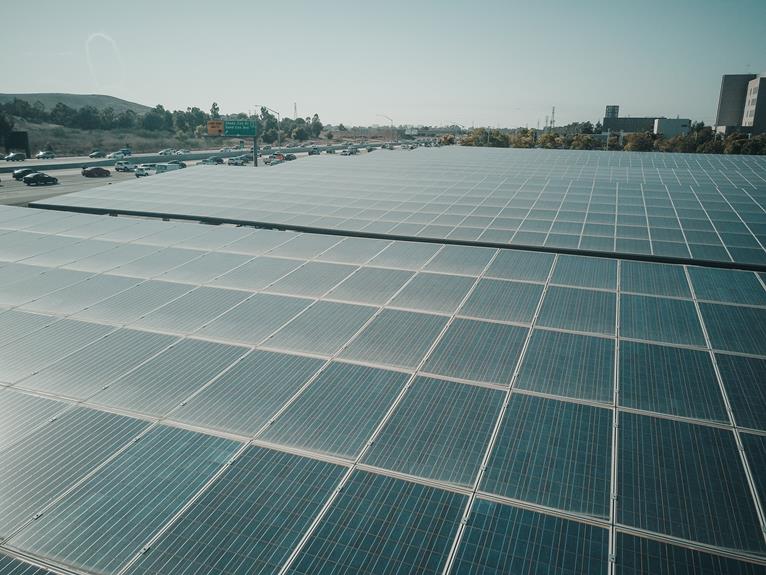A Brief Guide To Installing Solar Power In Your Home
Are you tired of relying on traditional energy sources that drain your wallet and harm the environment? Well, you’re in luck! We have the ultimate solution for you – a comprehensive guide to installing solar power in your home.
Imagine harnessing the power of the sun to generate electricity and heat your home, all while saving money and reducing your carbon footprint. It’s like having your own personal power plant right on your rooftop!
In this guide, we’ll walk you through every step of the process, from understanding solar power to installing photovoltaic cells and navigating the permits and legal considerations. We’ll provide you with all the information you need to make informed decisions and ensure a smooth and successful installation.
So, get ready to join the solar revolution and take control of your energy future. Let’s get started!
Understanding Solar Power
Understanding solar power is crucial for homeowners looking to harness the sun’s energy to power their homes. Solar power offers numerous benefits, including reducing electricity bills, minimizing carbon footprint, and contributing to a sustainable future.
Exploring solar power options, homeowners can choose between solar collectors and solar panels. Solar collectors are typically used for heating water or air, while solar panels convert sunlight into electricity.
When evaluating solar panel efficiency, factors like panel type, size, and orientation should be considered. To maximize solar power savings, homeowners can optimize their energy usage by using energy-efficient appliances, insulating their homes, and monitoring their solar system’s performance.
Incorporating solar power into daily life involves adjusting habits, such as scheduling energy-intensive tasks during daylight hours and taking advantage of solar storage systems to store excess energy for later use.
Related Article: What is Solar Energy and How Does It Work?
Installing Solar Power for Heating Systems
If you’re considering installing solar power for your heating systems, there are a few key points you need to know.
First, simple heating systems can be easily integrated with solar power, allowing you to save money and reduce your carbon footprint.
Second, there are some essential parts required for a solar heating installation. These include solar collectors, a heat transfer fluid, a heat exchanger, and a storage tank.
Lastly, understanding how these parts work together is crucial for a successful solar heating system installation.
Simple Heating Systems
To easily install a solar collector and tank on your roof, consult a contractor for their expertise on complex closed loop systems. They can guide you through the process and help you obtain any necessary permits for installation.
Here are five key points to consider:
- Heating Efficiency: Solar power for heating systems can significantly improve heating efficiency in your home. It reduces energy consumption and lowers utility bills.
- Cost Savings: By harnessing the power of the sun, you can save money on heating expenses in the long run. Solar energy is a renewable and free resource.
- Installation Process: Installing a simple solar heating system involves mounting the solar collector on your roof and connecting it to a tank. The tank stores and distributes the heated water.
- Maintenance Requirements: Regular maintenance is essential to ensure optimal performance. Tasks include cleaning the solar collector and checking for any leaks or malfunctions.
- Energy Consumption: Solar heating systems require electricity to circulate the heated water. However, the overall energy consumption is significantly lower compared to traditional heating methods.
By following these guidelines and seeking professional assistance, you can enjoy the benefits of a simple solar heating system. This way, you can reduce your environmental impact and maximize cost savings.
Required Parts for Solar Heating Installation
When installing solar heating systems in your home, there are several key components to consider.
Solar collectors, available in various sizes, are purpose-built to harness the sun’s energy. In colder climates, evacuated tubes provide better performance by minimizing heat loss.
Storage tanks are crucial for storing the heated water and are connected to the collectors to receive the solar energy. It is important to have a backup water heater in case of insufficient solar energy.
Water pumps are essential in active systems to circulate the water between the collectors and storage tanks.
In closed loop systems, heat exchangers play a vital role in transferring the heat from the collectors to the water.
Lastly, different installations require various controls and valves to ensure efficient operation.
1. Solar Collectors
Consider installing a solar collector that utilizes evacuated tubes to maximize the sun’s energy and minimize outside temperature influences, ensuring a consistent and efficient heating system for your home.
Solar thermal collectors, like evacuated tubes, are highly efficient in converting sunlight into usable heat energy. During the installation process, ensure that the collector is properly positioned to receive maximum sunlight exposure.
Regular maintenance, such as cleaning the tubes, is essential to maintain optimal performance. Conducting a cost analysis beforehand will help determine the long-term savings and benefits of this energy-efficient solution.
2. Storage Tanks
The solar storage tank acts as the bridge between the collectors and your water heater, ensuring efficient heating for your home.
Types of storage tanks:
- Closed loop system: water is heated in the storage tank by coiled pipes from the collector.
- Open loop system: water is pumped directly to the collectors for heating and then returned to the tank.
Factors to consider when choosing storage tanks:
- Storage tank maintenance
- Cost of storage tanks
Benefits of using storage tanks:
- Efficient heating for your home.
3. Water Heater
Make sure you have a backup hot water heater in place to ensure you never run out of hot water when you need it most.
When installing a solar power system in your home, it is highly recommended to have a backup hot water heater. This will guarantee a constant supply of hot water, even when the solar tank runs empty or the thermostat drops too low.
A solar water heater is an energy-efficient and cost-effective heating solution. Proper maintenance is essential for optimal performance.
Related Article: Commercial Solar Water Heater: A Natural Way to Save Money for Your Business
4. Water Pumps
Don’t forget, you’ll need a reliable water pump to ensure a constant flow of hot water in your home’s active solar system. Opt for energy-efficient pumps that are solar-powered to maximize your system’s efficiency.
These pumps are not only environmentally friendly but also help in water conservation. They can also be used for solar-powered irrigation and have agricultural applications.
To ensure the longevity of your pump, regular maintenance is essential. Clean the pump regularly and check for any leaks or malfunctions.
5. Heat Exchanger
Now that you understand the importance of water pumps in your solar power system, let’s explore the next crucial component: the heat exchanger.
This device plays a vital role in efficiently transferring heat from the solar collector to your water supply. By utilizing heat transfer mechanisms, such as coolant pipes or wrapped pipes, the heat exchanger optimizes the system’s efficiency.
Additionally, it is essential to consider maintenance requirements, cost considerations, and the environmental benefits of this component.
6. Controls and Valves
Installing controls and valves in your solar heating system is essential for achieving optimal efficiency and maintaining proper temperature regulation in your water supply. Here are four key aspects to consider:
- Temperature regulation: Controls and valves allow you to adjust the temperature of the water in your system, ensuring it’s neither too hot nor too cold.
- Pressure control: Valves help regulate the pressure of water flowing through your system, preventing damage to pipes and other components.
- Flow management: Controls enable you to direct the flow of water, ensuring it reaches the desired destinations efficiently.
- Safety mechanisms: Valves act as safety measures, allowing you to isolate or shut off the solar tank if any issues arise, such as leaks or contamination. Additionally, safety valves are installed to release excess pressure to prevent system damage.
Properly installed controls and valves make it easier to troubleshoot and maintain your solar power system, ensuring it operates smoothly and efficiently.
Photovoltaic Cell Installation
To determine your solar panel needs, you’ll need to analyze meteorological data and your current electricity usage. This will help you calculate how much sunlight you receive each year and how many solar panels you’ll need to generate enough power.
If you choose to go off-grid, you’ll need a generator or battery to supply power when solar energy isn’t available. On the other hand, if you decide to remain on the grid, you’ll need to research local laws and power company regulations to ensure your installation is compatible and safe.
Additionally, you’ll need to acquire the necessary parts for photovoltaic cell installation, which may include solar panels, inverters, mounting systems, and electrical wiring.
Determining Solar Panel Needs
Determining your solar panel needs involves several key considerations. First, you need to calculate the efficiency of the panels by taking into account the amount of sunlight your location receives and the panel’s efficiency rating. This will help you determine how much energy the panels can generate.
Next, budget planning is crucial. You need to consider the installation costs and potential maintenance requirements to ensure that you can afford the entire process.
Analyzing your energy consumption is another important step. By examining your electricity usage data, you can determine the number of panels needed to meet your specific electricity needs.
In addition to these factors, you also need to assess the suitability of your roof. Consider factors such as its orientation, shading, and structural integrity to determine if it can accommodate the panels effectively.
By taking all these steps into account, you can make an informed decision about the size and quantity of solar panels required for your home. This will help you maximize energy generation and minimize costs in the long run.
Related Article: How Many Solar Panels In a 10kW System?
Off-Grid Solar Power Installation
Get ready to experience the freedom of off-grid solar power installation! Off-grid solar power provides numerous advantages.
First and foremost, it allows you to be self-sufficient and independent from the traditional power grid. This means you can enjoy electricity in remote locations or during power outages.
Additionally, off-grid solar power is environmentally friendly, as it harnesses clean and renewable energy from the sun.
However, there are some disadvantages to consider as well. The initial costs of installing an off-grid solar power system can be higher compared to grid-tied systems. Furthermore, off-grid systems require regular maintenance, such as cleaning the solar panels and monitoring battery levels.
It is also important to ensure the system’s efficiency by properly sizing the components and optimizing their performance.
Despite these considerations, off-grid solar power offers a reliable and sustainable solution for your energy needs.
Related Article: Off-Grid Solar System Installation For Homestead In North Idaho
On-Grid Solar Power Installation
Now that you’ve learned about off-grid solar power installation, let’s explore the benefits and considerations of on-grid solar power installation.
Installing solar power on-grid allows you to connect your system to the local power company, providing you with the added advantage of utilizing their grid as a backup power source. This means that during times of low sunlight or high energy demand, you can still rely on electricity from the grid.
Additionally, on-grid solar power installation can potentially save you money on electricity bills, as excess power generated by your system can be sold back to the grid for credits or rebates.
However, it’s important to note that on-grid solar power installation may require research on local laws and regulations, as well as special equipment to ensure compatibility with the power company. Regular maintenance is also necessary to ensure the efficiency and longevity of your system.
Required Parts for PV Cell Installation
When installing a solar power system in your home, it is important to consider the key components required for a successful installation. These components include:
- Solar panels: These capture sunlight and convert it into electricity.
- Batteries: These store the excess energy for later use.
- Charge controller: This regulates the flow of electricity from the panels to the batteries.
- Inverter: This converts the DC electricity from the panels and batteries into AC electricity for your home.
- Generators: These can be used as a backup power source when sunlight is limited.
Having these components in place is crucial for the proper functioning of your PV cell installation.
1. Solar Panels
To make the most of your solar power installation, you’ll want to ensure that the panels you choose are a perfect fit for your home – like a glove. When selecting solar panels, consider their efficiency, maintenance requirements, installation cost, lifespan, and warranties.
Opt for panels with high efficiency to maximize your energy production. Regular maintenance will ensure optimal performance and longevity. Factor in installation costs and choose panels with reliable warranties for peace of mind.
2. Batteries
When selecting batteries for your off-grid installation, it is important to choose deep cycle batteries that are made with lead-acid or nickel-cadmium. These types of batteries are specifically designed to provide the necessary energy storage and release capabilities for your solar system.
Deep cycle batteries have a longer lifespan compared to other battery types, which makes them an ideal choice for solar power systems. Not only do they last longer, but they also offer higher capacity, allowing you to store more energy.
To ensure the longevity and safety of these batteries, regular maintenance is crucial. This includes checking the water levels and ensuring proper ventilation.
Related Aticle: Discover 3 Best Batteries For An Off-Grid Energy System
3. Charge Controller
Don’t miss out on maximizing the lifespan of your off-grid solar system by investing in a charge controller. This device can extend your battery’s service by up to 150%. To ensure the efficiency of your charge controller, regular maintenance is essential. Here are four key aspects to consider:
- Types of charge controllers available in the market
- Proper sizing of the charge controller for your system
- Troubleshooting common charge controller issues
- Implementing charge controller maintenance to prolong its lifespan and optimize performance.
4. Inverter
Inverters are the essential bridge between the solar panels generating direct current power and the alternating current power required for everyday use in your home. Understanding inverter technology is crucial to choosing the right inverter for your solar power system.
The inverter installation process involves connecting the inverter to your solar panels and electrical system. Regular inverter maintenance and troubleshooting can ensure optimal performance.
Using an inverter in your solar power system provides benefits such as grid-tie capability and protecting electrical workers during power outages.
Related Article: Choosing The Right Solar Inverter For Your Project
5. Generators
When it comes to going off-grid, a generator is an absolute must-have, as it serves as a lifeline for recharging batteries and providing emergency power in overwhelming situations. Here are some key points to consider about generators:
- Portable generators are a convenient option for temporary power needs, while standby generators are designed for long-term use.
- Regular generator maintenance is essential to ensure optimal performance and longevity.
- Generator safety measures include proper ventilation, grounding, and regular inspections.
- Generator sizing is crucial to meet your power needs without overloading or underutilizing the generator.
- Gasoline-powered generators are popular due to their affordability and availability of fuel.
Related Article: Portable Solar Generator – The Smart Way to Power Your Outdoor Life Efficiently
6. Assorted Other Parts
Another important component to consider for your off-grid installation is the assortment of other parts required. These include wiring, grounding equipment, overcurrent protection, junction boxes, and disconnects. These components are essential for a successful solar power system.
Additionally, it is important to invest in energy-efficient appliances to maximize the benefits of your solar power. By using appliances that consume less energy, you can make the most of your solar power system’s output.
You can also explore innovative solar power technologies, such as solar power for air conditioning. These advancements in solar power can help you further reduce your reliance on traditional energy sources.
Don’t forget to research financial incentives for solar installation. Many governments and organizations offer incentives and rebates to encourage the adoption of solar power. Taking advantage of these incentives can help offset the initial costs of your off-grid installation.
Lastly, following maintenance tips for optimal performance is crucial. Regularly inspecting and cleaning your solar panels, checking connections, and monitoring performance can help ensure that your system operates efficiently and effectively.
Permits and Legal Considerations
Before you begin installing your solar energy system, it’s crucial to contact your local municipality to inquire about any necessary permits. This will ensure that you comply with regulations and avoid any legal issues.
When it comes to electrical work and connecting your system to the power grid, hiring a licensed contractor is essential to ensure safety and adherence to codes.
Lastly, keep in mind that the government often provides support and incentives for renewable energy projects. By following the proper procedures and obtaining the required permits, you can benefit from their assistance throughout the process.
Contacting Local Municipality
Contacting your local municipality is crucial when installing solar power in your home. They hold the key to unlocking permits and regulations needed for your green energy dreams. Each municipality has its own regulations, permits, and zoning restrictions for solar panels.
Reach out to understand requirements and obtain permits. Check with homeowner associations for their rules too. Once you have all the information, begin the inspection process to ensure safety and code compliance. Contacting your local municipality helps navigate the complex process for a successful installation.
Hiring Licensed Contractors
To ensure the safety and efficiency of your solar panel installation, it’s crucial that you hire a licensed electrician who can expertly handle the electrical aspects of the project.
When it comes to contractor selection, make sure to choose someone who specializes in solar installations and has experience working with the specific type of system you plan to install.
Check that the contractor holds the necessary licenses and certifications required by your local municipality. This ensures that they are knowledgeable about safety regulations and can carry out the installation in compliance with the necessary standards.
Additionally, verify the contractor’s qualifications and ask for references from previous clients. This will give you a better understanding of their expertise and reliability.
It’s also important to request cost estimates and a project timeline from the contractor to ensure that the installation fits within your budget and timeframe.
Related Article: Local Government Guide for Solar Deployment
Government Support for Renewable Energy
Now that you understand the importance of hiring licensed contractors for your solar power installation, let’s delve into the government support available for renewable energy.
The government recognizes the significance of transitioning to clean energy sources and has implemented various incentives and rewards to promote their use. By harnessing renewable energy, you not only contribute to a sustainable future but can also benefit from financial assistance.
The government provides tax credits and financial incentives to encourage homeowners to adopt renewable energy technologies like solar power. Additionally, they have established a regulatory framework to ensure adherence to rules and regulations during the installation process.
It is crucial to familiarize yourself with the renewable energy policies in your area and take advantage of the available government support. This not only helps you save money but also contributes to a greener and more sustainable future.
Conclusion
Now that you have reached the end of this comprehensive guide, you should have a clear understanding of solar power and how to install it in your home. By following the step-by-step instructions provided, you can harness the power of the sun to heat your home and generate electricity through photovoltaic cell installation.
Remember to obtain the necessary permits and consider any legal considerations before starting your solar power project. With this knowledge, you are well-equipped to embark on your journey towards a more sustainable and energy-efficient home.







15 Comments
Comments are closed.